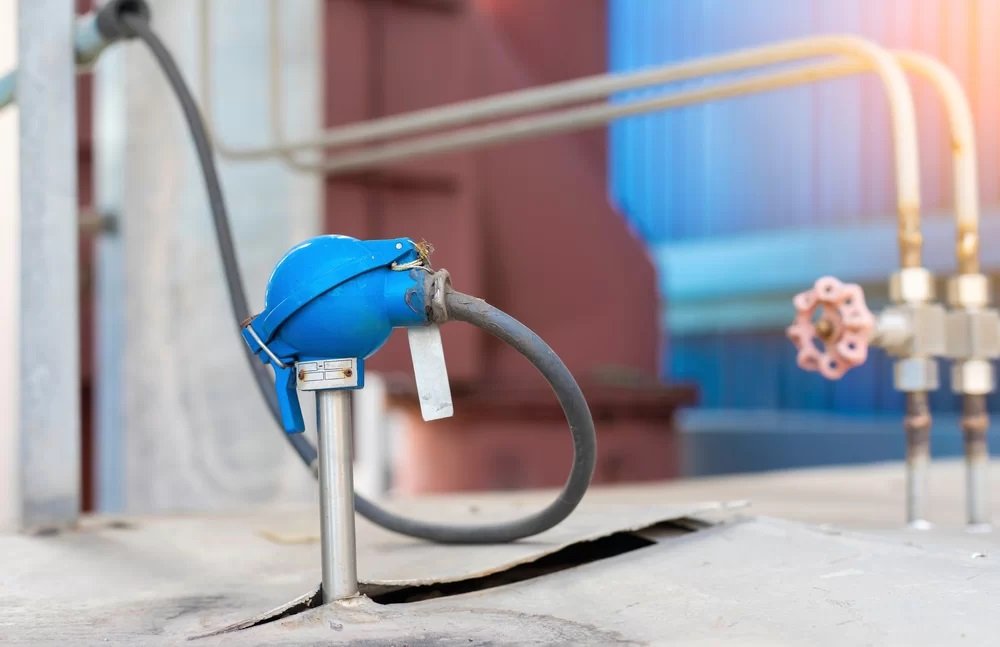Sensors are an important part of various electronic and electromechanical tools, equipment and machinery throughout industries. Pressure and temperature monitoring is needed in various manufacturing procedures. Definite temperature and pressure ranges need to be maintained for the substances being employed, as well as the machine’s fitness. Sensors like resistance temperature detectors (RTDs), thermistors, thermocouples, and so on are hugely used throughout industries. They may be incorporated into the system for full or partial automation. RTDs are known as the most popular temperature sensors in different industrial applications.
What is a Resistance Temperature Detector?
A resistance temperature detector is a temperature sensor suitable for industrial procedures or many applications where continuous temperature monitoring and control is important for process execution and working. Here, the distinction in temperature is measured on the basis of the sensor’s resistance. As the temperature grows, the sensor resistance also grows. The resistance is evaluated as an electric current traverses the sensor, generating a voltage. Utilising the resistance details, the sensor can identify the temperature. These sensors are generally made of nickel, copper, or platinum. So, the base resistance and highest temperature differ based on which metal is utilised. When deciding on which metal to employ for your RTD, be attentive to your usage. Selecting the best metal for your use is important and will come out with tighter strengths or tolerances.
Types of a Resistance Temperature Detector
Mainly, these temperature detectors are made of two or three wires. The latter provides higher temperature precision than the former. Some uses may require only a temperature range and not a very precise output. Detectors made using two wires are helpful in these applications. There are sensors made of four wires as well; they have inflexible temperature output endurances. All these wire compositions can be integrated into the two key types:
1. Surface Mount:
As the term indicates, surface mount RTDs can be placed on the needed object’s surface with a non-intrusive procedure. The temperature is evaluated using the contact surface. These sensors are flexible and can be modified to the shape and size of the substance. They can be placed on both curved and flat surfaces.
2. High Temperature Sensors:
These are normally composed of platinum and are employed for high temperature usage in rough industrial surroundings. This is because platinum, as a metal, is more protective against shocks, vibration, and intense temperatures than nickel or copper.
Functions and Advantages
In various applications, temperature is a parameter that requires to be continuously tracked. This is due to an application’s working relies on temperature. Thus, monitoring is significant to make sure the optimal temperature is consistent at all times. For this specific function, using temperature sensors like resistance temperature detector sensors, thermocouples, etc., is essential.
An RTD sensor is equipment that monitors an application’s temperature by measuring its variations in resistance in association with temperature. As temperature varies, the sensor’s resistance varies, too.
This sensor is utilised in many temperature sensitive applications for these reasons:
A. Increased accuracy
B. Stable in application
C. Extended service life
D. Provide repeatability
In comparison to various temperature sensing tools, RTDs have been established as the most precise in the industry. These tools are helpful when the stability and accuracy of measurements are significant.
Various Industrial Applications
1. Immersion Heaters
Industrial immersion heaters are equipment for electrical heating. One practical use of RTDs is tracking temperatures with immersion heaters in tanks. The heater is a coil of metal heated by an electrical current and inserted in a material or liquid.
2. Building Automation
A resistance temperature detector is important for industrial control, building automation, and agriculture. It identifies temperature variations and assists in measuring temperature, room possession, power usage, or different conditions.
3. Packaging Systems
These sensors are indispensable to hot melt packaging systems due to their accuracy in sensing and parting temperature. They continuously keep a temperature control stability of +/- 1°F, which is important for plastics and hot glue usage systems.
4. Automotive Industry
These sensors are present in all vehicle engines and detect air, oil, and liquid temperatures and many crucial measurements.
5. Pharmaceutical Manufacturing
The making of drugs and medicines needs rigorous temperature control. Temperature variations can change the chemicals and harm a batch. The pharma industry needs accurate instrumentation that fulfils formulation, research, testing, and manufacturing needs.
6. Chemical Processing
Chemical companies have stern temperature control needs for chemical purity and security. Production systems incorporate RTD sensors as trackers and controls to ensure thermal precision and safety.
7. Other Applications
Other general applications for RTDs are industrial control systems, agricultural monitoring, and data logging.
These sensors’ adaptability makes them significant constituents in computers, power electronics, consumer electronics, food processing and handling, medical electronics, industrial electronics, aerospace, and military.
Conclusion
If you are looking for a resistance temperature detector, ensure you buy it from a trustworthy manufacturer and supplier. Tempsens Instrument Pvt. Ltd. offers such sensors, flexible heaters, and incorporated systems usable throughout industries. The company provides various levels of personalisation to match your application needs.
Read More: The Benefits of Opening a Demat Account

